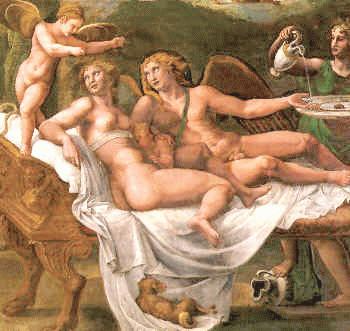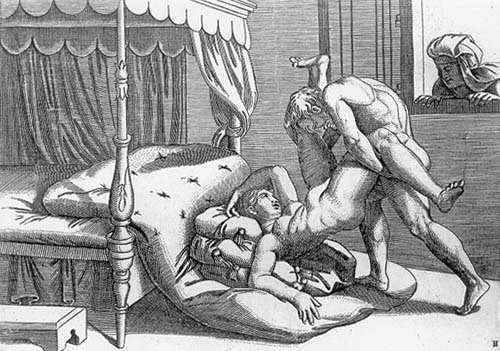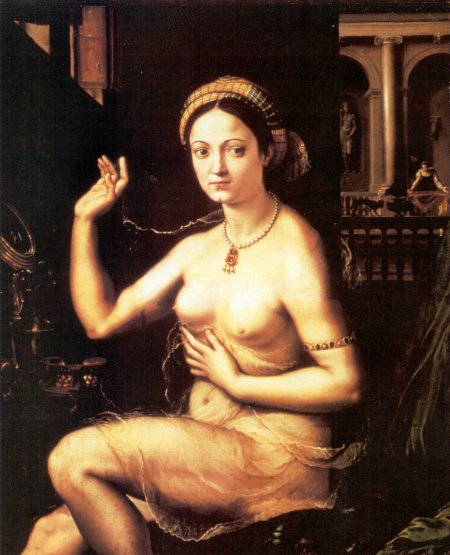Giulio Romano (1499-1546)
Get a Romano Certificate of Authenticity for your painting (COA) for your Romano drawing.
For all your Romano artworks you need a Certificate of Authenticity (COA) in order to sell, to insure or to donate for a tax deduction.
Getting a Romano Certificate of Authenticity (COA) is easy. Just send us photos and dimensions and tell us what you know about the origin or history of your Romano painting or drawing.
If you want to sell your Romano painting or drawing use our selling services. We offer Romano selling help, selling advice, private treaty sales and full brokerage.
We have been authenticating Romano and issuing certificates of authenticity since 2002. We are recognized Romano experts and Romano certified appraisers. We issue COAs and appraisals for all Romano artworks.
Our Romano paintings and drawings authentications are accepted and respected worldwide.
Each COA is backed by in-depth research and analysis authentication reports.
The Romano certificates of authenticity we issue are based on solid, reliable and fully referenced art investigations, authentication research, analytical work and forensic studies.
We are available to examine your Romano painting or drawing anywhere in the world.
You will generally receive your certificates of authenticity and authentication report within two weeks. Some complicated cases with difficult to research Romano paintings or drawings take longer.
Our clients include Romano collectors, investors, tax authorities, insurance adjusters, appraisers, valuers, auctioneers, Federal agencies and many law firms.
We perform Giulio Romano art authentication, appraisal, certificates of authenticity (COA), analysis, research, scientific tests, full art authentications. We will help you sell your Giulio Romano or we will sell it for you.

Giulio Romano was an Italian painter and architect. A prominent pupil of Raphael, his stylistic deviations from high Renaissance classicism help define the 16th century style known as Mannerism. Giulio’s drawings have long been treasured by collectors; contemporary prints of them engraved by Marcantonio Raimondi, were a significant contribution to the spread of 16th century Italian style throughout Europe.

Giulio Romano was born in Rome. In his native city, as a young assistant in Raphael’s studio, he worked on the frescos in the Vatican loggias to designs by Raphael and in Raphael’s Stanze in the Vatican painted a group of figures in the Fire in the Borgo (L’incendio di Borgo) fresco. He also collaborated on the decoration of the ceiling of the Villa Farnesina. After the death of Raphael in 1520, he helped complete the Vatican frescoes of the life of Constantine as well as Raphael’s Coronation of the Virgin and the Transfiguration in the Vatican. In Rome, Giulio decorated the Villa Madama for Cardinal Giuliano de’ Medici, afterwards Clement VII. The crowded Giulio Romano frescoes lack the stately and serene simplicity of his master.

After the Sack of Rome (1527) and the death of Leo X, artistic patronage in Rome slackened. Vasari tells how Baldassare Castiglione was delegated by Federico Gonzaga to procure Giulio to execute paintings and architectural and engineering projects for the duchy of Mantua. His masterpiece of architecture and fresco painting in that city is the suburban Palazzo del Te, with its famous illusionistic frescos (c. 1525-1535). He also help rebuilt the ducal palace in Mantua, reconstructed the cathedral, and designed the nearby Church of San Benedetto. Sections of Mantua that had been flood-prone were refurbished under Giulio’s direction, and the duke’s patronage and friendship never faltered: Giulio’s annual income amounted to more than 1000 ducats. His studio became a popular school of art.

In Renaissance tradition, many works of Giulio’s were only temporary:
“When Charles V came to Mantua, Giulio, by the duke’s order, [Giulio] made many fine arches, scenes for comedies and other things,in which he had no peer, no one being like him for masquerades, and making curious costumes for jousts, feasts, tournaments, which excited great wonder in the emperor and in all present. For the city of Mantua at various times he designed temples, chapels, houses, gardens, facades, and was so fond of decorating them that, by his industry, he rendered dry, healthy and pleasant places previously miry, full of stagnant water,and almost uninhabitable.” – Vasari, Vita
He traveled to France in the first half of the 16th century and brought concepts of the Italian style to the French court of Francis I.

Giulio also designed tapestries and the erotic album I Modi which was expertly engraved by Raimondi, a project that landed Raimondi in jail in Rome. In 1546, just as he was appointed architect to St. Peter’s, Giulio Romano died.

Giulio Romano has the distinction of being the only Renaissance artist to be mentioned by William Shakespeare. In Act V, Scene II of The Winter’s Tale Queen Hermione’s statue is by “that rare Italian master, Julio Romano”, although Giulio was not a sculptor.

Still wondering about an Italian painting in your family collection? Contact us…it could be by Giulio Romano.
Reviews
1,217 global ratings
5 Star
4 Star
3 Star
2 Star
1 Star
Your evaluation is very important to us. Thank you.
